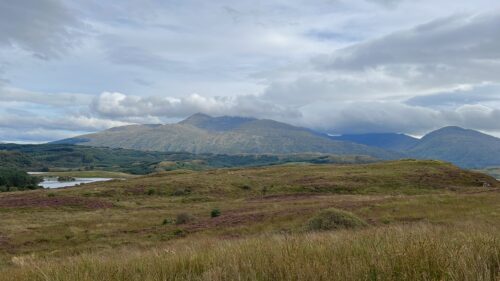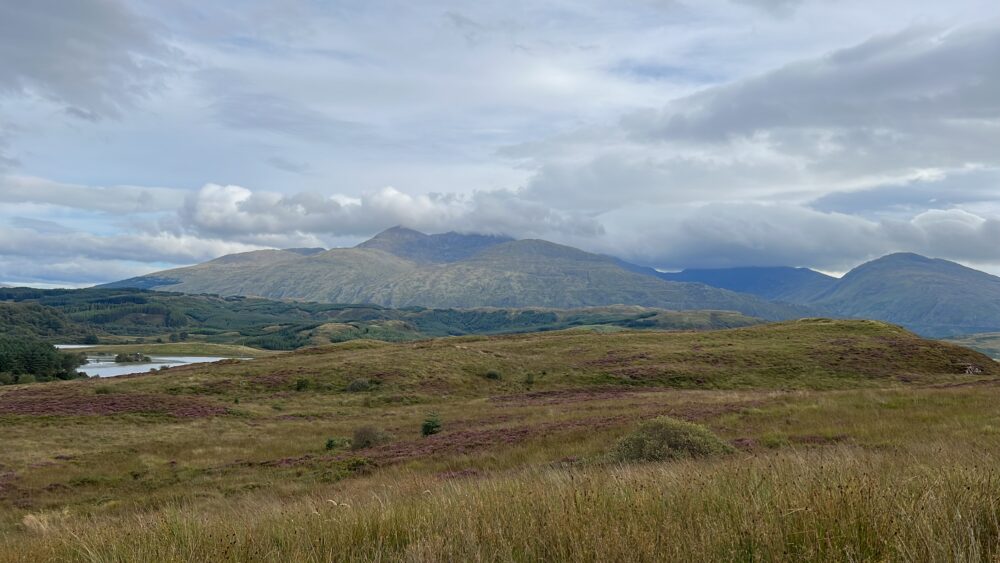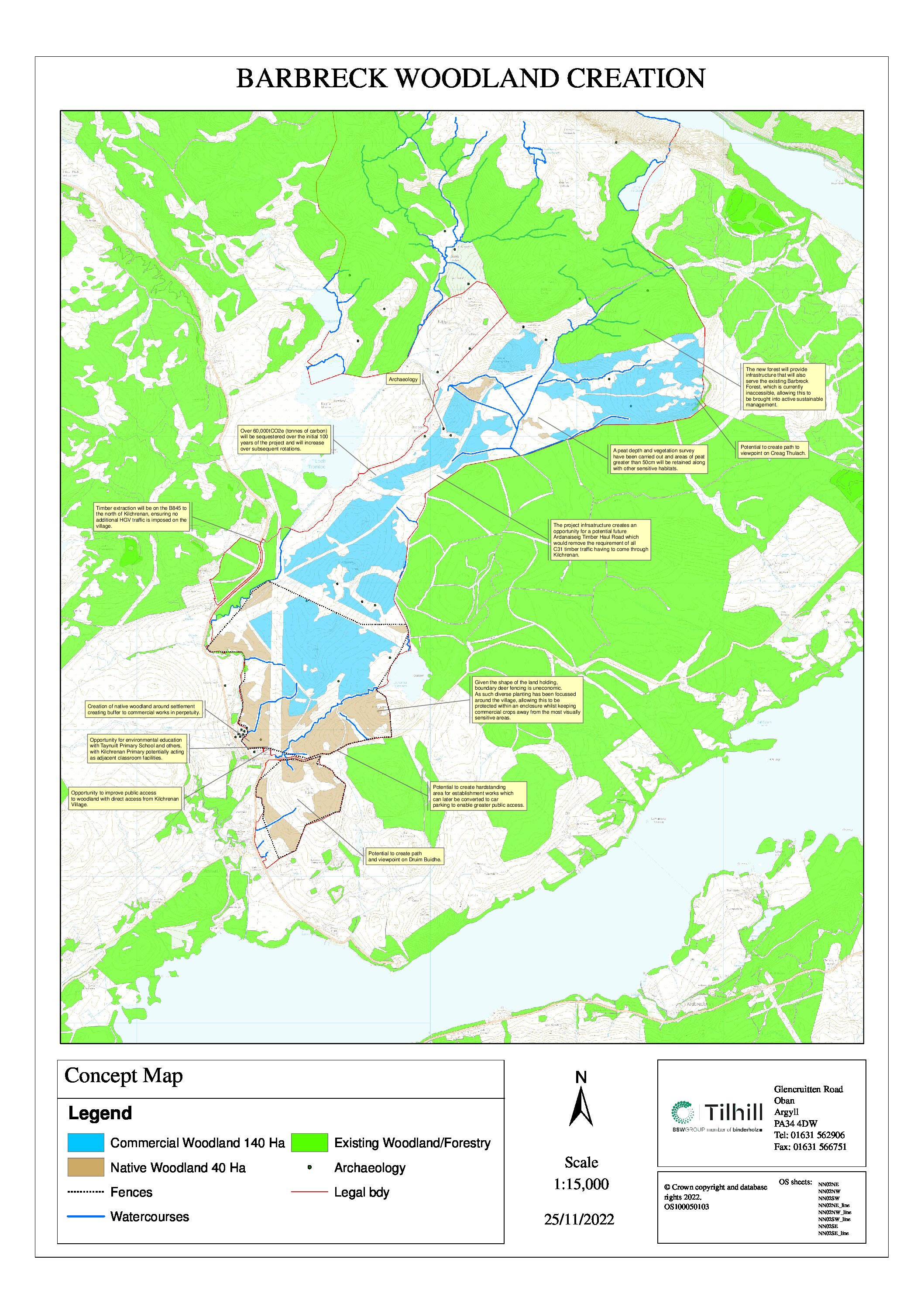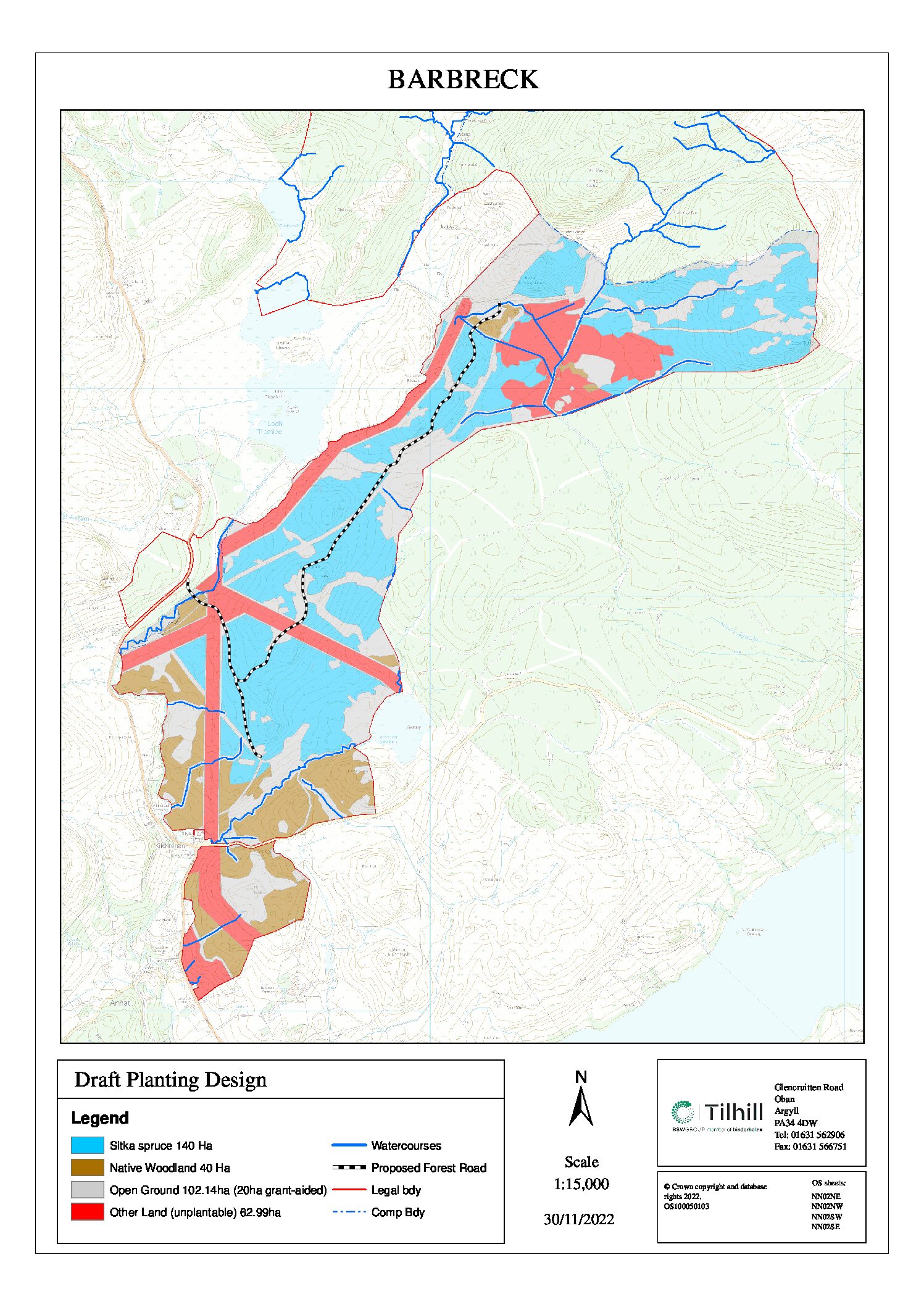
What is Barbreck Woodland Creation?
The proposed new woodland creation scheme will connect the existing forest between Loch Tromlee and the Pass of Brander with the public road between Kilchrenan and Taynuilt. The land has previously been used for upland rough grazing and will be transformed into a new productive conifer forest with areas of native and mixed woodland to ensure a sustainable home grown timber supply and provide rural local jobs for future generations. The forest will be set out within a matrix of open ground and native broadleaved woodland, maintaining and working with the key existing landscape features. The area is scattered with locally significant archaeology, tracks, different habitat types, and existing trees, and the focus will be to integrate these features into the new woodland.
Please take part in the consultation survey at the bottom of this page.
Find out more about the Barbreck Woodland Creation Plan
What is the proposed planting design?
Our objective is to create a productive woodland, in keeping with much of the existing forested landscape in the area.
This productive area will be focussed to the North of Kilchrenan village linking to the productive conifer forest behind Ballimore Farm. Around the village we will be planting native woodland, consisting mostly of Downy birch, Alder, Rowan, and Caledonian Scots Pine, with elements of Sessile oak, Goat willow, Hazel, Aspen and Cherry.
These are in keeping with existing native woodland in the area while also adding species diversity to the existing willow scrub that can be found in some parts of the site already.
In lieu of a secondary commercial conifer element, it is proposed to plant half of the native woodland at productive densities (2,500/ha minimum), with the bulk of this area planted with Downy birch and Scots pine.
This plan will leave a significant area of open ground (156 Ha, 47% of the total site area), for other open ground habitat types (heather/wetlands etc). This open ground will help retain important views, maintain biodiversity and habitat, and help to create a more varied feel to the woodland being created.
Tree species being used have also been matched for the native broadleaf planting based on an extensive vegetation survey.
How many trees will be planted?
The overall area within which the woodland creation will be carried out is 335 Hectares (Ha) in size, of which just over half (53%) will be planted with trees, resulting in a total of approximately 460,000 trees being planted
What species mix? And why?
Most of the woodland creation area will be Sitka spruce to create a sustainably managed forest supplying timber into the UK timber market; which currently relies on around 80% imported timber to meet our current timber demand. There is a growing need for domestically grown timber, which Barbreck will play a part in solving. Read more about the role of timber in climate change mitigation.
The remaining 40 Ha will be native woodland consisting of Scots pine and native broadleaves, with the majority of these being focused around the village of Kilchrenan, helping to provide local landscape benefits and amenity value.
This mix of species meets UK Forestry Standards (UKFS) whilst the diversity is a good mix to deal with a changing climate.
What is the tree provenance?
All broadleaved/native trees will be of local origin and provenance, as per UK Forestry best practice, coming from seed provenance regions 106 or nearest neighbour. The plan is to source the majority from Taynuilt Trees, a small independent nursery located only 15 minutes’ drive away. It is expected that Maelor Forest Nurseries in Darnaway will supply the home grown Sitka spruce.
How much Carbon will be sequestered throughout the project?
The calculations indicate that in excess of 60,000 tCO2e will be sequestered in the 100-year period post-planting.
Note: There are no plans to sell carbon credits from this woodland through the Woodland Carbon Code.
Will you offer any educational days with local schools or is the site connected to somewhere where the new woodland could become educational or provide volunteering opportunities?
The site is located next to Kilchrenan Primary School, which unfortunately is currently set aside with the local children now attending Taynuilt Primary School. As such, it may be possible to use this as a base for educational days, for Taynuilt or other local schools, combining a classroom element along with a site visit to plant some trees just a short walk away. Other potential educational or volunteering opportunities would also be welcomed.
Why plant trees?
Woodlands improve the quality of our environment:
- Wooded catchments help protect the quality of our drinking water supplies and can reduce the impact of flood events.
- Trees capture harmful pollutants in our atmosphere and improve our air quality, especially in towns and cities.
- Tree canopies provide shade, shelter and absorb sound. Soils, animals and humans can be protected from the extremes our weather and climate throws at us.
- Woodlands help to stabilise soils, reducing erosion and slips. They can protect against pollution by providing a buffer between source and receptor, or help the recovery of contaminated land.
- Trees need pollination too and woodlands offer a rich habitat for our wild pollinators.
Will the timber haulage cause disruption?
Access to the site will be planned to not produce any additional timber haulage traffic through the community at Kilchrenan.
Will there be public access?
The proposed planting will include ATV tracks that will be available for the local community and visitors alike through pedestrian gates. While advisory notifications may be implemented during certain forestry operations, these routes will be open to non-motorised access as per the Outdoor Access Code.
Will there be habitat and species protection?
Although the proposed site itself has no species or habitat environmental designations, the site does border on adjacent protected areas. A full bird and vegetation survey has been conducted with no protection issues raised. In accordance with the UK Forestry Standard, and Tilhill’s own professional design standards, bio-diversity will be promoted, areas of open ground maintained, and areas of existing deep peat and marsh preserved. These are essential habitats and carbon sinks and will add important structural variability to the overall forest design. Tilhill also manages much of the existing woodland in the area so the protection of species and habitats can be managed holistically at a landscape scale.
We would like to invite you to take part in this woodland creation consultation through the form below.
Alternatively, you can also submit comments to your local Tilhill Forest Management team directly at consultationwhn@tilhill.com and including the word “Barbreck” In the subject line.





